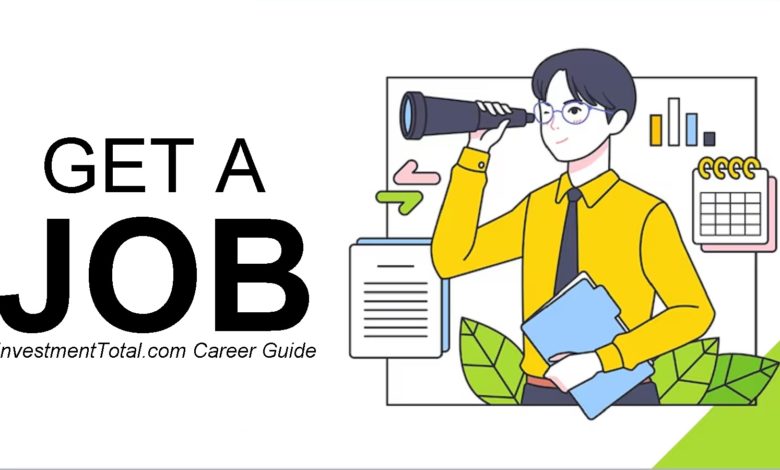Get a Job: Step by Step in Finding a Job

Want to get a job today? Finding a job is easy, but getting a job you dreamed of is a different career story. Job hunting can feel overwhelming, but breaking the process down into clear steps makes it much more manageable. Whether you’re fresh out of school, changing careers, or looking for better opportunities, this guide will help you navigate the job search and land your next role.
To Get a Job, Understand Your Career Goals
Assessing Your Skills and Interests
Before you start sending out applications, it’s important to know what type of job suits you. Take time to reflect on your skills, strengths, and interests. This self-assessment will guide you toward roles that align with your personal and professional growth.
Resources like career assessment tools or consultations with career coaches can offer clarity. Platforms such as Myers-Briggs, StrengthsFinder, and CareerExplorer can help identify your strengths and areas where you can excel.
Setting Clear Career Goals
Once you have a better understanding of your skills and interests, the next step is to set specific career goals. Consider both short-term and long-term objectives. Think about the industries you want to work in, the type of work environment that suits you, and the roles that will allow you to grow and develop.
Having clear goals will help you focus your job search on the roles that will take you where you want to go.
To Get a Job, Build a Strong Resume and Cover Letter
Crafting a Professional Resume
Your resume is often the first impression employers have of you, so it’s crucial to make it stand out. Start by including your contact information, followed by a summary of your experience and skills. Focus on your achievements and responsibilities from past roles, emphasizing how they relate to the job you’re applying for.
Use keywords from the job description to ensure your resume gets past automated applicant tracking systems (ATS) used by many companies. Formatting your resume neatly, with clear sections and concise language, makes it easier for recruiters to review.
Writing a Tailored Cover Letter
A cover letter is your chance to introduce yourself more personally and explain why you’re the perfect fit for the role. Research the company thoroughly and tailor your cover letter to show how your experience and skills align with their needs.
Begin with a strong opening that grabs attention, then dive into how your background matches the job requirements. Show your enthusiasm for the role and the company. End your cover letter with a call to action, such as expressing your interest in an interview.
To Get a Job, Search for Job Opportunities
Utilizing Job Search Engines
The internet is a goldmine of job opportunities, and job search engines make it easier to find openings. Websites like Indeed, LinkedIn, and Glassdoor are popular platforms where employers post job listings. Create profiles on these platforms and set up job alerts to receive notifications for positions that match your criteria.
Job search engines allow you to filter by location, salary, and job type, helping you narrow down the roles that suit your preferences.
Networking for Job Opportunities
Many jobs are filled through networking rather than traditional applications. Attend industry events, join online forums, and connect with professionals in your field. LinkedIn is an excellent platform for building your professional network. Don’t hesitate to reach out to former colleagues, mentors, or industry leaders for advice or job leads.
Networking gives you the inside track on unadvertised job openings and can even lead to referrals, increasing your chances of getting hired.
Preparing for Job Interviews
Researching the Company
Once you’ve secured an interview, preparation is key. Start by researching the company to understand their mission, culture, and the challenges they face. Knowing the company’s values and goals will help you align your responses to what they’re looking for in a candidate.
Practicing Common Interview Questions
Interviews can be nerve-wracking, but practicing can boost your confidence. Prepare for common questions like “Tell me about yourself” and “Why do you want to work here?” Be ready to discuss your experience, skills, and how they relate to the role.
It’s also important to practice behavioral interview questions, which assess how you’ve handled situations in the past. Use the STAR method (Situation, Task, Action, Result) to structure your answers and provide clear examples.
Preparing Your Own Questions
At the end of the interview, employers will often ask if you have any questions. This is your opportunity to show your interest in the company and the role. Prepare thoughtful questions about the team, company culture, or the challenges the role will face. Avoid asking about salary or benefits in the initial interview, as these topics are typically discussed later in the hiring process.
Following Up After the Interview
Sending a Thank-You Note
After the interview, sending a thank-you note can make a lasting impression. It shows gratitude for the opportunity and reiterates your enthusiasm for the role. In your message, briefly mention a highlight from the interview and reaffirm your interest in the position.
A thank-you note can set you apart from other candidates and keep you top of mind as the hiring team makes their decision.
Negotiating Job Offers
Evaluating the Offer
When you receive a job offer, it’s tempting to accept right away, but it’s important to take the time to evaluate it thoroughly. Consider the salary, benefits, work environment, and growth opportunities. Think about whether the role aligns with your career goals and if it’s a good fit for your skills and experience.
Negotiating Salary and Benefits
If the offer doesn’t meet your expectations, don’t be afraid to negotiate. Research average salaries for the role in your area and use that information to support your case. Be polite and professional, and make sure to highlight your qualifications and the value you’ll bring to the company.
Negotiation isn’t just about salary; you can also discuss benefits, vacation time, or flexible working hours.